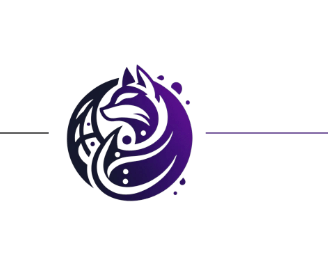The Chameleon Effect
Master the "Chameleon Effect"! Learn how to adapt communication styles to connect with anyone. Boost your career & relationships with effective perception management.
SOCIAL CAPITALGROWTH MINDSETEMPLOYEE ENGAGEMENTRESILIENCEEFFICIENT COMMUNICATION
Aria Caffaratti, MBA, PMP
7/31/20245 min read


Jim Rohn once said: “Effective communication is 20% what you know and 80% how you feel about what you know.”. Let me rephrase that. Effective communication is 20% of your message and 80% of how you carry yourself. To be efficient with our communications, we must understand that we are all unique in how we communicate and perceive the world. Only after considering this, we can navigate communicating with others successfully.
Jimmy (not his real name) knocked on the door yesterday. He carefully peeked in to see who was in the office. As it so happened to be, the three of us didn’t have much going on — we were more than eager to solve his issue.
Jimmy is a colleague from a different department. He’d been with the organization for over five years now. It turns out, he’s in sales.
“Would you ever tell?!” — a colleague giggled over a cup of coffee.
“Not really,” I agreed sipping a different beverage. “But then again, I’ve never seen him in his work environment.”
“But isn’t it all the same? Just look at the way he carries himself! I bet he’s no good!” — she insisted.
I opened my mouth to continue the argument but decided to leave it there. It’s one of those situations that gives food for thought.
Throughout our lives, we all wear different hats. We’re parents, children, brothers and sisters, caretakers and planners, business owners and employees. We’re friends and we’re colleagues, we’re also protagonists and antagonists. Our environment constantly changes. Most importantly, the people surrounding us are never the same. All individuals have their own expectations. Expectations are filtered through the prism of our perceptions.
I come from a project management background. It means I’m one of those people who are touching everything, but nothing at the same time. My fingers are dipped into different aspects of the business, and I know more people than I could count. I am part of different steering committees and work groups, I participate in a variety of internal and industry events… Quite frankly, I’m all over the place. But now hear this: naturally, I’m an introvert.
As an individual, I love calm, dimly lit places. On weekends you would most likely find me at the local coffee shop, somewhere cozily tucked away in the corner. I like to observe — ideally, it’s a position where I see most of the space, but very few people would be able to notice me. I’m not creepy, no. I just like my privacy. I also like to manage my risks.
When it comes to work, I’m a natural ambivert — I have a switch that gets turned over every single time I’m presented with a task. Many of my tasks consist of data collection and analysis, benchmarking, and quiet planning. I’m sitting with paperwork and screens for most days. The introvert thrives! Yet when it’s time to present or hold an important meeting with my stakeholders, I can easily command the room. Many times, colleagues and even friends came to me in astonishment. “I didn’t know you could do this!”, “I didn’t expect that of you!”, “When did you learn that?” — they would say.
I’m not sure if I should feel offended or flattered. Perhaps, the best approach is not to take it personally. After all, some of these people only see us in a particular role. When presented in a different light, we seem like a brand-new person.
Poor Jimmy seemed timid and insecure, so my colleagues jumped to the conclusion that he must be performing poorly at his sales job. Truth to be told, any normal human being would feel insecure when entering an unknown department, asking for information they aren’t sure they can provide, and interacting with people who are quite scary if just described through their job titles. Some wing it as they swing it, but most of us tread with caution when presented with unexplored territories. Imagine: if we had no prior knowledge of Jimmy’s occupation, we would have perceived him differently.
How to: Perceptual Engineering
As we already concluded that everything comes down to perception, the next step is figuring out if we can change how others perceive us. I strongly believe that we can.
My examples are strictly work-related, but it’s applicable to all aspects of life. The most important is understanding how people imagine or what the standard is for the role we’re playing.
If we aim to be a good parent, what does it entail?
What does a good friend look like?
How do I carry myself as a trustworthy individual or a reliable partner?
Chances are that our understanding of these roles and their qualities is quite universal.
The debate here is, of course, whether we’re authentic or if we’re trying to fit the bill by portraying certain behaviors. I think it’s normal to shift our approach according to the situation — sociocultural context, the severity of the situation, or the group of individuals (or target audience). It’s not about authenticity — at this point, it’s about being adequate.
If we successfully identify our target audience/environment/situation and have it clear what the role we’re fulfilling means, we should try acting accordingly. Consistency will build a habit and it will allow establishing a public image we desire.
Review, Refine, and Repeat
As we continue on the journey of establishing certain perceptions, how do we know if we’re successful? Dr. Gemma Leigh Roberts (https://www.mindsetmattershub.com/) specializing in mindset, productivity, and performance encourages us to audit our progress.
Gather feedback about how people perceive us
Identify areas of improvement
Identify strengths and weaknesses
The more feedback we get, the broader the understanding we will have about how diverse groups from different areas perceive us. However, it’s important to step away from our emotions and remain objective. Only then we can objectively review our interactions with others and enable change — refine our messages and repeat “good practices”.
It’s important to be flexible in our communication
Sometimes people focus on us — and how we come across — instead of focusing on data and key information. If we approach our interactions with a flexible attitude, we will be able to adjust to different communication styles and deliver our intent and main ideas in the way best suitable for the recipient. Sometimes we might apply unconventional methods, but this flexibility is needed if we want to attract attention, create a warm and lasting impression, and come across as authentic.
Isn’t it funny, though? I might seem to contradict myself: be flexible and adapt to different people and circumstances — but remain authentic. However, it’s entirely possible. And it’s one of the basics of establishing — and maintaining — successful relationships.
I’m sure that Jimmy, me, or anyone else is constantly getting judged for our timid introverted personalities. People look at us and wonder how we landed the job we did or how we ended up marrying the person who is our spouse. Sometimes it’s odd. But perhaps it isn’t.
Our perceptions are often limited to the social environment and the context we’re exposed to.
The next time someone looks at you and evaluates your character, don’t take it personally — they don’t necessarily mean it. They simply don’t see enough of you. But for those who do, keep in mind: power to shape their perceptions lies within you.





